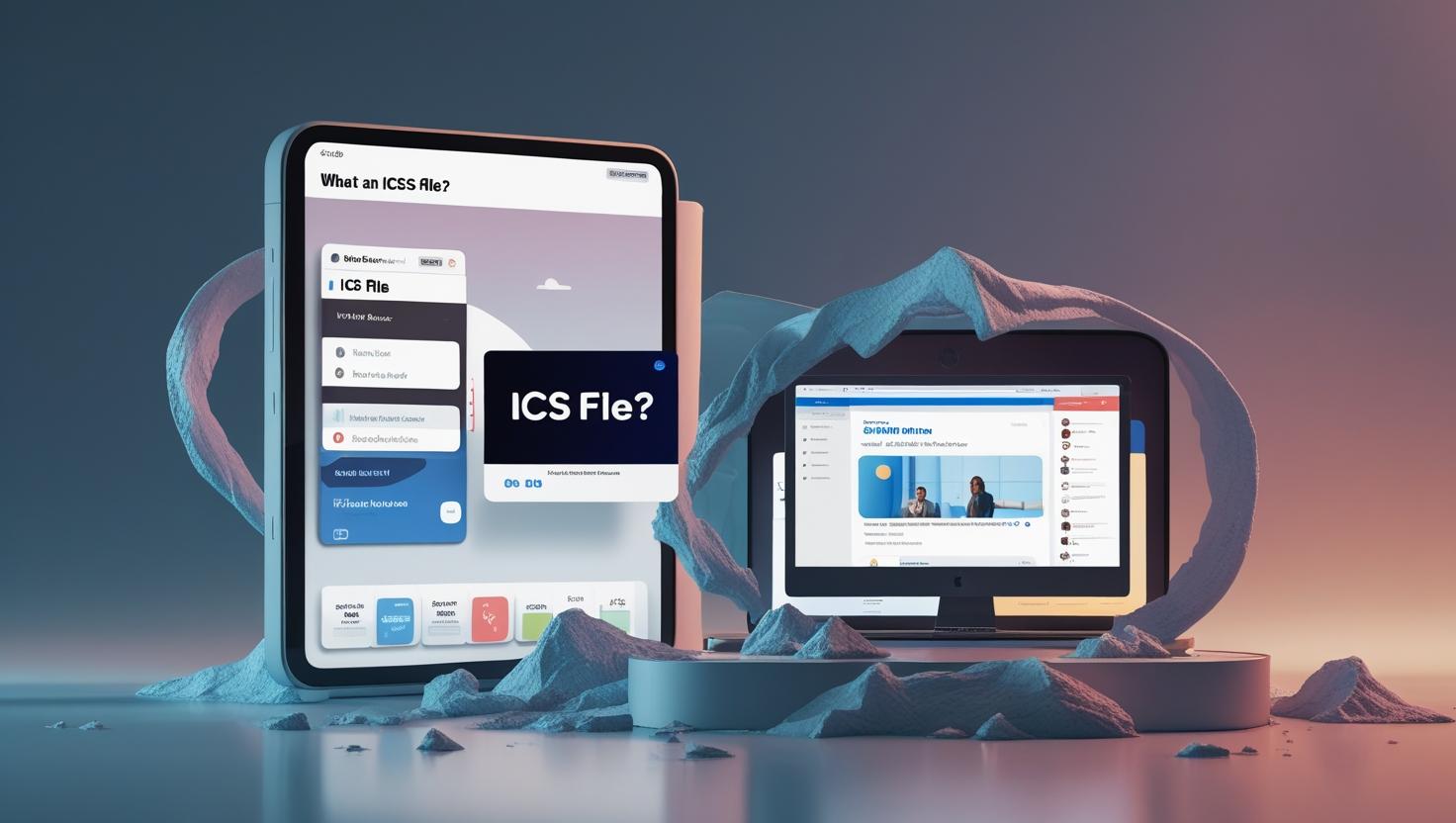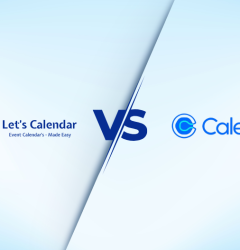- Email: [email protected]
- phone: +44 (0) 203 916 5117
Blogs
What Is an ICS File? How It Works and Why It’s Becoming Outdated for Modern Webinars.
- By Shubhi Patel
03 Jul

In a world where timing is everything, a missed calendar invite can be the difference between a deal closed and an opportunity lost. For decades, ICS files have been the backbone of calendar scheduling. They quietly powered the digital invites we receive in our inboxes for everything from weekly standups to annual conferences.
Stop Using .ical and .ics — Switch to Let’s Calendar to Send Calendar Invites
Start NowBut times have changed. As event organizers, CXOs, marketing teams, and webinar operations specialists manage increasingly complex and high-volume events, ICS files are showing their age. If you’re still relying on them to handle scheduling for webinars, client meetings, or conferences, you could be sacrificing reliability, personalization, and scale.
In this blog, we’ll explore what an ICS file really is, how it works, why it’s losing relevance, and how modern solutions like Let’s Calendar are reshaping the future of calendar invite automation.
What Is an ICS File and How It Works
ICS stands for iCalendar Scheduling and refers to a plain-text file format (.ics) that stores calendar event data. It follows the iCalendar standard, which was designed for universal sharing of event details across various calendar platforms.
A typical ICS file contains:
- Event title and description
- Start and end times
- Time zone
- Location
- Recurrence rules (if applicable)
ICS files are usually sent as email attachments or hosted on a server and shared via a link. Once clicked, they prompt the recipient’s calendar application (Google, Outlook, Apple Calendar, etc.) to import the event.
This simple structure made ICS files immensely popular in the early digital age, providing a relatively standardized way to share events.
The Role of ICS Files in Traditional Scheduling
In the early 2000s and even into the last decade, ICS files were the go-to format for:
- Calendar invitations via email
- Add-to-calendar buttons embedded in newsletters or event pages
- Integrations with tools like Outlook, Google Calendar, and Apple iCal
They became the silent workhorses behind millions of business meetings, webinars, and conferences. Even popular services like AddEvent and native calendar plugins relied heavily on the .ics format to function.
So why the shift?
ICS Calendar File Format: Limitations in a Modern Workflow
While ICS files still serve basic purposes, they fall flat when applied to today’s more dynamic event needs. Here’s where they struggle:
- No Personalization:
ICS files are static. You can’t tailor them for each attendee with their name, specific session links, or private access credentials. - No RSVP or Engagement Tracking:
You have no idea if someone opened the invite, added it to their calendar, or ignored it entirely. - Spam & Delivery Issues:
Email attachments (including .ics files) often trigger spam filters. Plus, different platforms render them differently, leading to UX issues. - Time Zone & Formatting Mismatches:
An ICS created in one time zone can show up incorrectly in another. With global events, that’s a disaster. - Manual and Hard to Scale:
Bulk sending ICS files means batch emails, no automation, and zero integration with modern CRMs or marketing workflows.
ICS vs Add to Calendar Buttons (AddEvent, Native, and HTML Options)
Most “Add to Calendar” buttons you see on websites or emails generate ICS files in the background. These may work decently for single-use events, but they still:
- Don’t update when event details change
- Require manual download and click-through
- Can’t track engagement or behavior post-click
For event teams running webinars or client meetings at scale, this isn’t good enough.
What Today’s Event Organizers Really Need
Modern event and meeting scheduling demands more than just adding a date to a calendar:
- Real-time RSVP tracking
- Cross-platform consistency without formatting issues
- Personalized invites with dynamic fields (e.g., name, topic, private Zoom link)
- Seamless delivery at scale (10 or 10,000 recipients)
- No spam risk or file download requirement
- Automation via CRM, Zapier, or Google Sheets
- Add to Apple/Google Wallet for check-ins
That’s where Let’s Calendar comes in.
Meet Let’s Calendar: The Smarter Alternative to ICS Files
Let’s Calendar is a browser-based platform built for marketers, CXOs, and webinar organizers who need more than static .ics files.
Here’s what makes it better:
- Send bulk calendar invites to 10 to 1 million recipients
- Personalize every invite with unique time slots, links, titles, names, and private meeting info
- Real-time RSVP tracking
- Cross-platform compatibility: Gmail, Outlook, Yahoo, Apple
- Add to calendar buttons that actually work, without broken ICS links
- Discreet and 1:1 invites for sensitive meetings
- CSV Upload & CRM Integration
- Zapier Automation with 5000+ tools
- Apple & Google Wallet integration for easy check-in
For organizations managing high-stakes, multi-session events, Let’s Calendar eliminates guesswork and gives back control.
How to Add Calendar Invites Using Let’s Calendar (Step-by-Step)
Step 1: Upload a CSV of your attendees or connect your CRM
Step 2: Customize each invite: session links, attendee names, time zones
Step 3: Send the invites from your domain
Step 4: Recipients click the smart “Add to Calendar” button
Step 5: You track RSVPs and attendance in real time
You can also embed Add to Calendar buttons in your landing pages or emails, without relying on outdated ICS files.
When to Move Beyond ICS Files for Webinars, Conferences, and Client Meetings
You’re ready to ditch .ics when:
- You’re hosting multi-session webinars with 100+ attendees
- You want to send tailored invites with unique links
- You need to update or cancel events after invites go out
- You want to track engagement, attendance, and conversions
- You’re using CRM or automation tools like HubSpot, Mailchimp, or Google Sheets
ICS is no match for this level of sophistication. Let’s Calendar is built exactly for these needs.
Stop Using .ical and .ics — Switch to Let’s Calendar to Send Calendar Invites
Start NowConclusion
ICS files served us well in the early internet. But today, they lack the flexibility, insight, and scale needed for high-performing webinar and conference workflows.
Let’s Calendar is your modern, intelligent alternative. It gives you full control of how your calendar invites look, behave, and convert — across Gmail, Outlook, Apple, and beyond.
👉 Ready to scale smarter? Start sending personalized, trackable calendar invites today with Let’s Calendar









Recent Comments